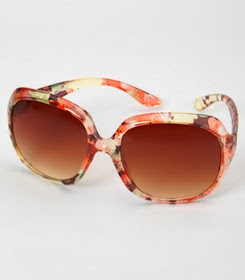Friends, this project is quick and simple, I promise. If you can sew one straight line on your machine, consider yourself a scarf maker. If I managed to do it from only a verbal explanation and with zero sewing skills, anyone can do it.
So here we go.
Supply List
- Scissors
- Tea light or candle and matches
- Sewing machine
- Elastic thread (I've found it at JoAnn's and Wal-Mart for less than $2.00. It is kept with the elastic products, not with the thread)

- Fabric with polyester in it. Sheer fabric works the best but any silky-looking fabric with polyester in it works great as well. You'll need 1/2 yard for an adult scarf and 1/4 yard for a kid's scarf.
I used this sheer butterfly fabric from JoAnn's for my scarf.
I loved that it already had the embellishments sewn onto it and it was a great fabric to work with.
I wanted a gingham print for my daughter but couldn't find a sheer gingham fabric in stores or online (if you find any you MUST tell me where I can get it). So I took a chance on this poly/nylon gingham in lavender (it looks and feels like a light-weight taffeta and has a a little bit of sheen to it).

I like how it turned out. It's not your typical scarf material, but that adds to the charm.

Simple Melted Spring Scarf Tutorial
1. Wind your bobbin by hand with the elastic thread using some tension as you wind it. Then put the bobbin back in the machine and thread it as you normally do.

2. Thread your machine with regular cotton thread (only the bobbin needs elastic thread).
3. Cut your fabric into two long strips (don't worry about perfectly straight cuts). For the adult scarf, I cut my two strips each about 6 inches wide and 60 inches long (your scarf will shrink to approximately half the original length once it is sewn). Adjust it to the length and width that's right for your style and height.

4. Sew the two strips together at one end, leaving your self with one very long thin strip of fabric.
5. Light a tea light or candle and set it on a heat-safe, flat surface.
6. Hold the edge of your fabric in the flame to melt it. Continue melting the edges of your fabric around the entire perimeter of the scarf. This seals and finishes the edge (taking care of the fraying) with a unique look and without hemming and finishing it on a machine- hooray!
Notes about melting fabric: Don't be intimidated, after a little practice, it's quick and easy. If you've melted fabric flowers for other projects, you're already skilled for this job. I suggest practicing on a fabric scrap first. Sheer fabrics melt fast and ignite easily, so be careful and don't panic if it lights on fire, just blow it out and move on. Silky fabrics melt slower, but be careful not to hold them too close to the flame or you will melt a tiny hole in the fabric ( i have a few in mine, but when the scarf is finished, you can't see them.) The edges should be a bit curvy and uneven, that is the look you are going for, so please don't worry about messing it up.
7. Sew a straight stitch down the center of the entire length of fabric and watch it ruffle as you go.
(I added a second row of stitches on the gingham fabric because it wasn't ruffly enough with just the single row of stitching (the more rows of stitches, the tighter the ruffle will be). The sheer butterfly fabric was perfectly ruffled with just one row of stitches.)

8. Don your new Spring scarf and think about how clever you are on the inside and the out ;)











































